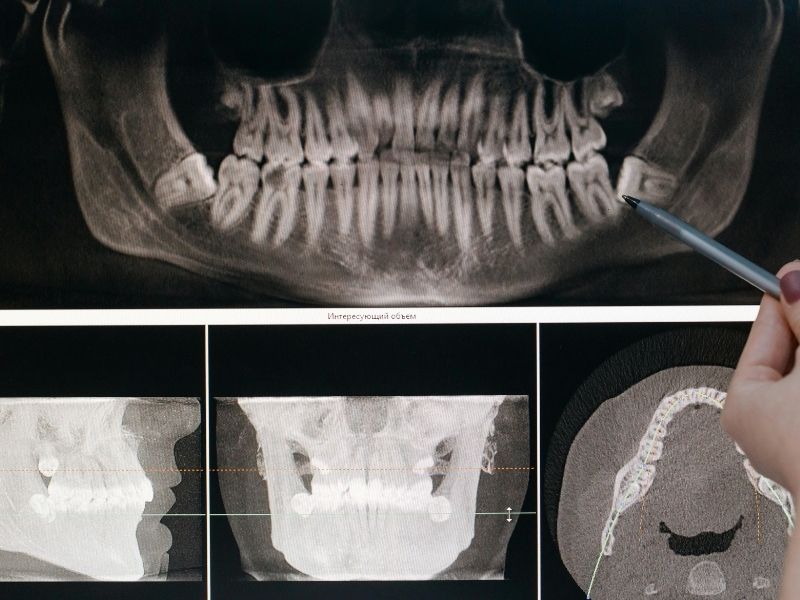Emergency Wisdom Tooth Removal: Fast Relief When You Need It

Waking up with an aching jaw, swelling on one side of your face, or throbbing pain near the back of your mouth is never a good sign—especially when it strikes without warning. In many cases, that discomfort is your body signaling a problem with your wisdom teeth.
While wisdom teeth removal is often planned in advance, emergency extractions are sometimes needed when symptoms escalate suddenly. Whether due to infection, impaction, or pressure on nearby teeth, swift action can prevent complications and provide fast relief.
This guide walks you through everything you need to know about emergency wisdom tooth removal—what symptoms to watch for, why these situations happen, how treatment works, and how to manage your recovery confidently.
What Does It Mean To Remove a Wisdom Tooth in an Emergency?
Emergency wisdom tooth removal occurs when one or more third molars are taken out right away because of discomfort, infection, or other urgent dental problems. These procedures are done right away, unlike scheduled extractions, to stop symptoms from getting worse.
Most people get their wisdom teeth between the ages of 17 and 25. Because they are the final teeth to come in, they typically have issues, especially when there isn't enough room in the jaw. When they come in at the wrong angle, become stuck under the gums, or are infected, they can cause severe, quickly worsening symptoms that need immediate medical attention.
When is it an Emergency to Have Wisdom Tooth Pain?
It's natural to feel a little painful as your wisdom teeth come in, but other symptoms could mean a more serious problem that needs to be looked at and treated right once. Look out for these signs:
- Pain that comes on unexpectedly or gets worse over time
- Swelling in the face or jaw, especially if it spreads or makes it feel tight
- Not being able to open your mouth very much (sometimes called trismus)
- Gums that are red, bleeding, or full of pus near the wisdom tooth
- Poor taste or poor breath that doesn't go away even after brushing
- Fever, chills, or enlarged lymph nodes in the neck
- Pain that spreads to the ear, neck, or head
These could be signs of an infection, nerve pressure, impaction, or even an abscess growing under the gumline. If you don't treat these problems, they could cause infections throughout your body or permanent damage to your jaw.
What Makes Wisdom Teeth a Problem?
The last adult teeth to come in are wisdom teeth, which are also called third molars. They are at the very rear of the mouth. Sometimes they come in on their own and don't cause any problems, but in a lot of other cases, they cause a lot of problems that need to be fixed.
Some common issues are:
- Impaction: The tooth doesn't come all the way out and stays stuck in the jawbone or gum. This can cause discomfort, edema, and inflammation.
- Partial Eruption: When a tooth only partially breaks through the gums, it leaves tissue exposed, which makes a flap where bacteria can grow and cause pericoronitis (gum infection).
- Too Many Teeth: Wisdom teeth often push against other teeth, which can cause them to become misaligned and hurt, especially if you have had orthodontic work done before.
- Cyst Formation or Infection: Infections can happen around teeth that are impacted or just partially erupted. In bad situations, cysts filled with fluid may form and hurt surrounding bones or roots.
What Happens During an Emergency Extraction?
A full evaluation is usually the first step in an emergency wisdom teeth removal. Your dentist will:
- Look over your symptoms and medical history
- Use a CT scan or digital X-rays to check the position of your teeth
- Find out if local anesthesia, sedation, or general anesthesia is the best choice
Once numb, the treatment usually includes:
- Making a cut in the gum tissue (if the tooth is stuck)
- Taking off bone that is covering the tooth (if needed)
- Taking out the teeth, either in one piece or in smaller pieces to make it easier to get rid of
- Cleaning the area and putting in dissolvable sutures if necessary
The extraction normally takes 30 to 60 minutes, depending on how difficult it is. Patients are watched over and sent home with information about how to get better the same day.
Aftercare: How to Get Better After an Emergency Wisdom Surgery on Teeth
Healing after an emergency extraction is similar to healing after a planned one, however it may take a little longer if there was a lot of swelling or infection before the extraction.
Immediately after surgery:
- Bite down lightly on gauze to stop the bleeding for the first few hours
- Put cold packs on the outside of the face to help with swelling
- Follow the directions for taking antibiotics or painkillers exactly
- Take the rest of the day off and don't do any strenuous activity
Ongoing Recovery:
- For a few days, eat soft, cool foods such as soups, smoothies, yogurt, and oats
- To avoid dry socket, don't use straws, smoke, or rinse hard
- After 24 hours, rinse gently with saltwater to help the wound heal
- Keep the area clean, but don't brush near the surgery site right away
Most individuals feel a lot better in 2 to 3 days, and they usually heal completely in 1 to 2 weeks, depending on the person.
The Risks of Waiting to Get Treatment
If you don't take care of a painful wisdom tooth, it can lead to:
- Infection becoming worse
- Bacteria moving to other areas of the body
- Jaw stiffness or trouble expanding the mouth
- Loss of bone or irreversible damage to nearby teeth
- Formation of cysts or abscesses
- Go to the emergency hospital if your symptoms get worse
That's why it's vital to pay attention to warning symptoms. What starts off as slight pain might turn into a significant health problem.
Do Something Before it Gets Worse
Sometimes, the pain from a wisdom teeth doesn't go away on its own. If it starts to affect your sleep, food, or capacity to focus, you need to do something. Emergency removal delivers fast relief, eliminates problems, and restores your comfort in just a few hours.
The sooner you get help, the easier the surgery will be and the faster you will heal.
Last Thoughts
Not all wisdom tooth removals are emergencies, but when they are, timing is everything. Don't delay if you have sudden swelling, throbbing pain, or evidence of infection near a wisdom teeth.
Your health and comfort are important, whether you've been having symptoms for weeks or the pain came out of nowhere. Taking action right away can halt the infection, safeguard the teeth next to it, and let you eat, talk, and sleep without pain.











